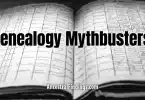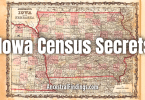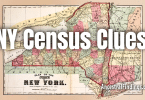The 1892 New York census is an essential source for family history researchers working in the late 19th century. With the destruction of the 1890 U.S. federal census, the 1892 state count offers one of the only large-scale snapshots of life during that decade. For anyone tracing New York families through immigration, urbanization, or internal migration in the 1880s and 1890s, this record is a key substitute for the lost enumeration.
Population Shifts and the Need for a State Census
This statewide census, particularly the 1892 count, was part of New York’s constitutional requirement to enumerate the population for legislative redistricting. It coincided with a period of massive immigration, rapid city growth, and industrial development. By 1892, cities like New York, Buffalo, Rochester, and Syracuse had become hubs of social and economic transformation.
Although simpler than some earlier or later records, its timing makes it uniquely valuable. It captured families in transition, especially those shaped by new labor markets and changing laws.
What You’ll Find in the Records
The form was relatively brief, gathering the following details:
- Full name
- Age
- Sex
- Color (a racial classification)
- Nativity (state or country of birth)
- Occupation
While household structures were preserved, there were no relationship indicators. This requires some analysis to interpret correctly, but name groupings and age sequences help clarify family units, crucial for examining families listed in the 1892 New York census.
Research Strategies for Filling the 1890 Gap
Because it falls between the 1880 and 1900 federal enumerations, using the 1892 New York census count is useful for:
- Pinpointing immigrants who arrived in the 1880s or early 1890s
- Locating urban residents before the turn of the century
- Tracking movement within or between counties
- Estimating birth years from age listings
Urban counties such as Kings (Brooklyn), Queens, New York (Manhattan), Erie, and Monroe show excellent survival of records. Many upstate counties also retain well-preserved copies, though gaps exist. Local archives should always be consulted for coverage, especially those relevant to the 1892 New York census.
Where to Begin Your Search
You can find the 1892 records through:
- FamilySearch.org (images; variable indexing)
- Ancestry.com (searchable with linked images)
- New York State Archives (microfilm and finding aids)
- County-level libraries and genealogical societies
Because family relationships weren’t listed in the 1892 New York census, careful image browsing is often more fruitful than keyword searches. Cross-reference with city directories, church records, and land documents where possible.
A Real-Life Example
Suppose you’re looking for a woman named Maria Leone, born about 1875, who appears as a widow with children in the 1900 census. By checking the 1892 enumeration in Brooklyn, you may find her in a household with Antonio Leone, age 45, born in Italy, and a young wife, Maria. Even if her age seems off, this helps confirm her earlier presence and introduces a potential husband. With that, you can investigate immigration logs, church registers, and naturalization files connected to the 1892 New York census records.
Limitations to Consider
Despite its usefulness, this census lacks:
- Relationship indicators
- Exact dates
- Street addresses
- Birthplaces of parents
- Marital status
These limitations mean supplemental records are important for confirmation. But for many families—especially newcomers to the city listed in the 1892 census—it may be the only record linking them to a precise time and place in the 1890s.
Why This Census Still Matters
While not a perfect replacement for the missing federal data, the 1892 New York census bridges a crucial gap. Its value lies in its timing and scope, capturing the lives of thousands who may not appear elsewhere until a decade later.
Researchers working in New York between 1880 and 1900 should not overlook this record. It remains a reliable entry point into a period often obscured by the loss of the federal schedule.






